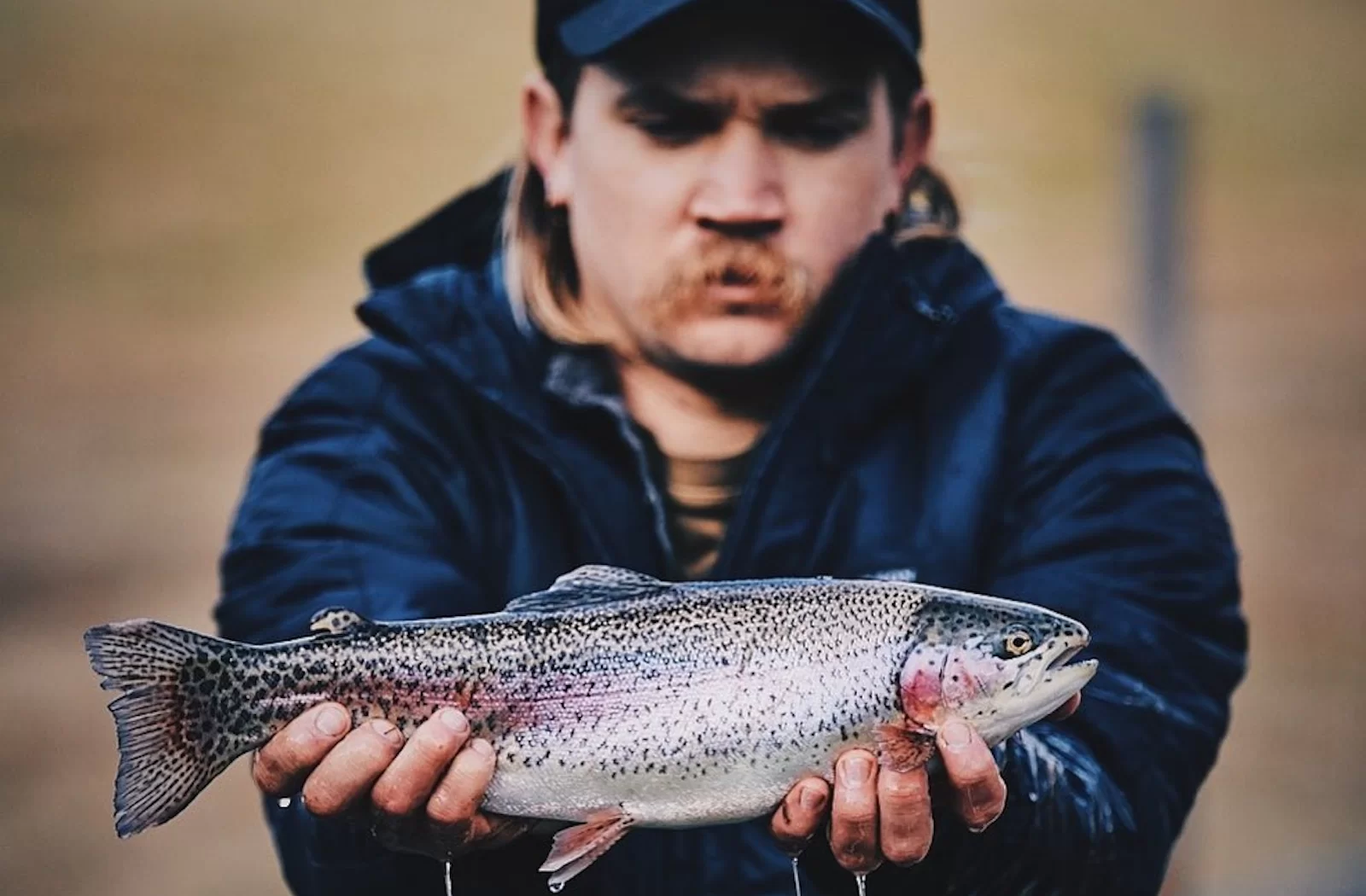There’s a trout revival currently underway in Virginia’s Western Highlands that’s getting notice in and outside of the Old Dominion State. And for good reason.
An independent hatchery situated 30 miles northwest of Roanoke, Virginia is taking the culinary world by storm with its unique trout offerings. The former 1930s-era Department of Interior facility is also fostering a new appreciation for the brook trout (Salvelinus fontinalis)—Virginia’s official state fish and sole native trout species.
Smoke in Chimneys is an agribusiness just three years into operation. Due to growing demand for the product, the small business is expected to raise upwards of 50,000 trout this year to sell directly to followers and some of the Mid-Atlantic region’s top rated restaurants—including a Michelin-rated restaurant in Washington, D.C.
The upstart small business not only desires to raise and sell premium trout, but help change American perceptions about farm-raised trout and related aguaculture industry. Their commitment to regenerative farming practices and conservation stewardship practices has not only won them customers, but praise from outdoor brands like Filson and YETI.
Kinute caught up with Ty Walker, one half of Smoke in Chimneys, during his recent visit to the Washington, D.C. area to learn more about the operation.
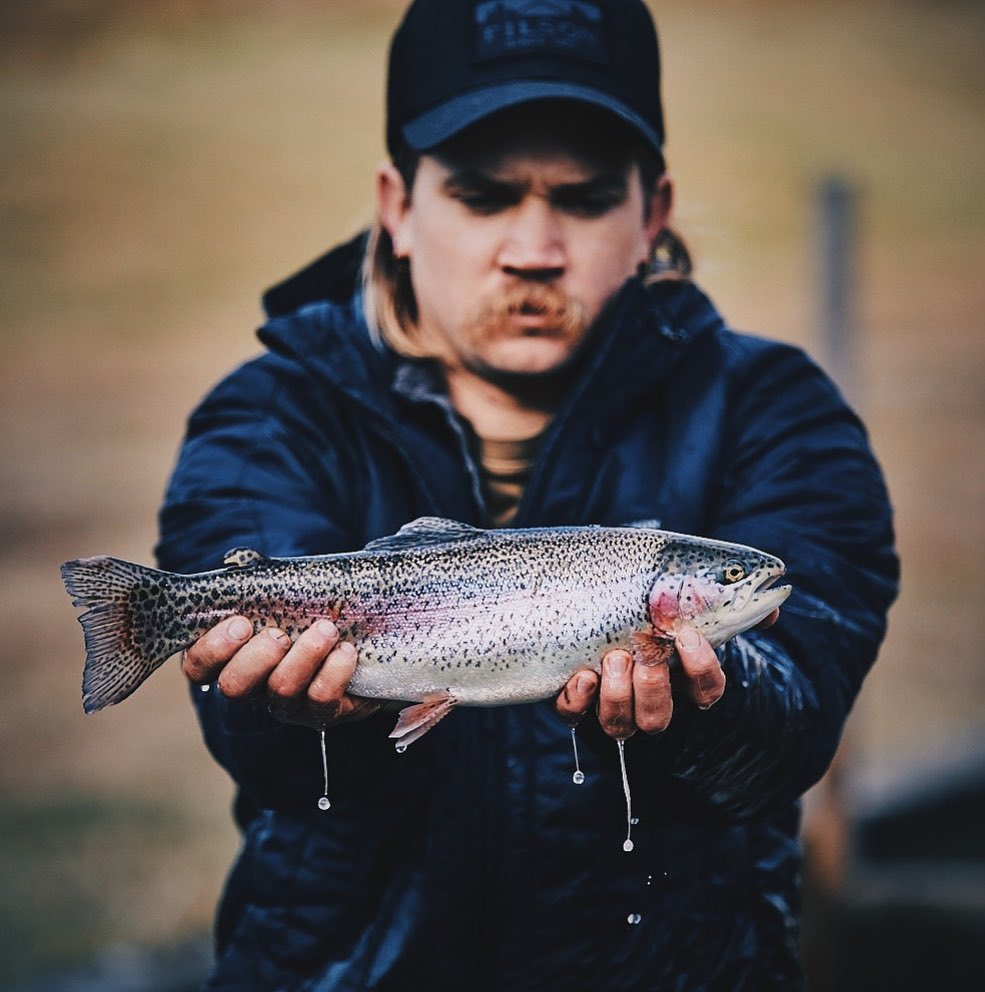
Ty Walker, co-founder of Smoke in Chimneys. Smoke in Chimneys | Facebook
Physically and Spiritually Bringing Life Back to the Hatchery
In 2019, Ty and Shannon Walker were tipped off about purchasing a defunct former Interior Department trout hatchery, built in the 1930s, from their friend. About half a century later, the land was sold to the state.
Initially doubtful, the couple eventually warmed up to the idea and felt called to undertake this project. They also work closely with Matthew Wagner, Ty’s brother-in-law.
“My wife Shannon was like, ‘This is ridiculous. This is not a good idea.’ And nobody was really in favor of it. But over the period of about two weeks, we just felt this is for us and we're gonna give this thing a shot,” Ty said.

The hatchery hatches and grows out four types of trout throughout the year—rainbow, brook, brown, and golden. Smoke in Chimneys | Facebook
Farming, however, wasn't entirely foreign to the couple. The Walkers had a farming stint in Oregon during college.
“I grew up fly fishing my whole life, but fly fishing and raising 50,000 trout are two totally different things,” said Ty.
After acquiring the property, the Walkers were put to the test. Walker said he began navigating the challenges of restarting, managing, and overseeing a hatchery in typical millennial fashion: seeking out social media for answers and resources to get the process going.
He naturally confided in YouTube and typed in “How to Start a Trout Hatchery” in the search bar. But his early quest wasn’t as fruitful as he had hoped. He came away disappointed seeing very few videos imparting what he calls tacit knowledge for restoring old hatcheries to their former glory. That’s when he dug deeper and stumbled upon the answer he was looking for: seeking out old knowledge from a book he procured on eBay.
“I found a book from the 1930s on eBay. It was about a guy in upstate New York raising trout,” he said. “I buy the book. I'm reading and I'm like, ‘Man, this is amazing,’ because everything he's saying is making sense. Because his system was similar to mine–written during the same era.”
Smoke in Chimneys is not a typical name for a hatchery, but its meaning is special to Ty and his wife. The name, Walker explained, means metaphorically bringing the land, physically and spiritually, back to life through their business. And that spirituality influences the Walkers–especially Ty.
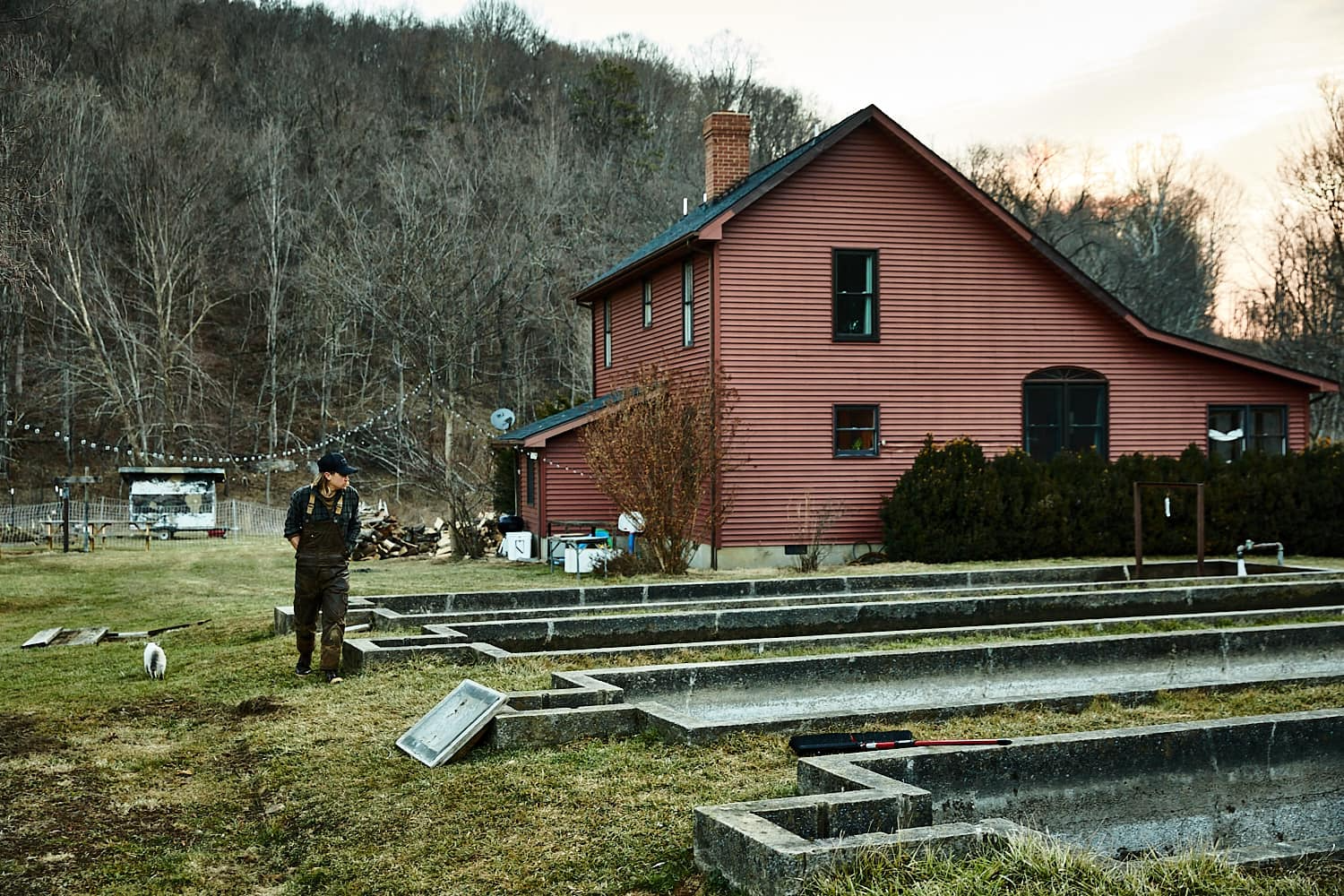
All trout are raised in fresh mountain spring water, right next to the hatchery building. Smoke in Chimneys | Facebook
“This whole thing has been such a journey of faith,” Ty said on running a small business. “We've had so many issues and times where you're like, ‘I just literally need to go get a job. This is the stupidest project on the face of the earth. What am I doing?’”
“I'm coming up here to meet with all these restaurants,” he continued. “Are they going to like the trout? Are they not? Are they going to buy it? Are they not? I don't know. So even as far along as we are, there's still so many kinds of questions … But for me, God's just really using this whole journey to just make me just a better person.”
Changing Hearts and Minds About Trout
The hatchery is not the only entity being revived. So is the brook trout—Virginia’s official state fish and lone native trout species.
According to the Virginia Department of Wildlife Resources, wild brook trout thrive in some 400 rivers and streams. But few people get a chance to encounter them – let alone consume them – given their minute size. A typical wild brook trout doesn’t exceed 12 inches in length.
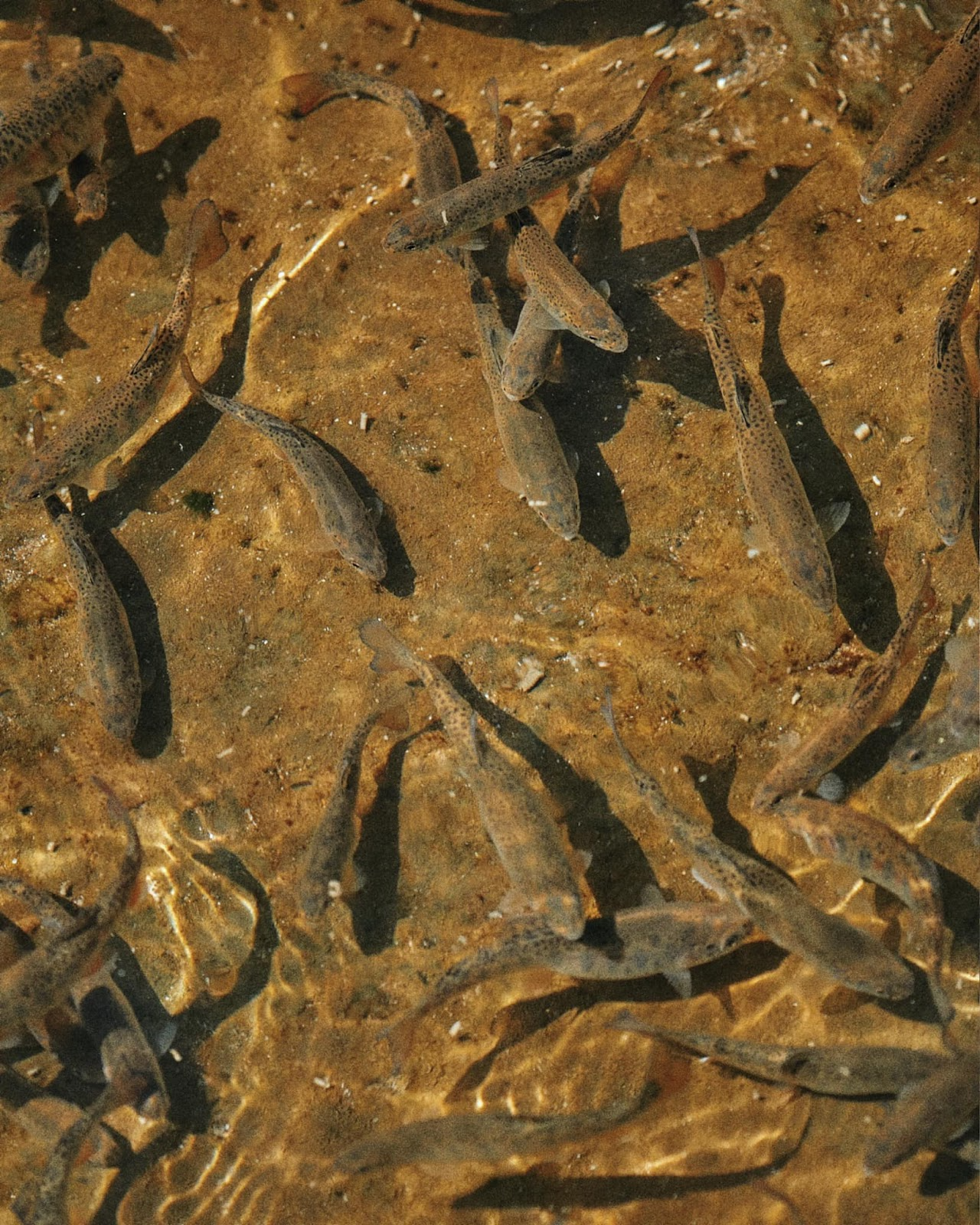
Wild brook trout. Smoke in Chimneys | Facebook
“Some of the feedback we've gotten, which is really meaningful, is feedback like, ‘Wow, I used to catch and eat wild trout with my grandpa back when I was a kid and I haven't eaten trout like this in 30 years,’” said Ty. “We're going for the days of eating wild seafood–even wild trout…It's a wonder there's a wild trout anywhere. I personally don't eat wild trout just because they're small.”
The hatchery raises brook trout and three others – rainbow, brown, and golden trout – year-round.
“Trout has been so bastardized,” the trout aficionado put it bluntly.
It doesn’t help that Virginia imports the majority of its supply – about 90%, Ty added – from Idaho or North Carolina.
That’s why Smoke in Chimney’s goal, including Ty’s, is to raise the “best tasting, best looking trout possible.” How so? By attempting to emulate qualities found in wild trout and hoping it lands on more plates.
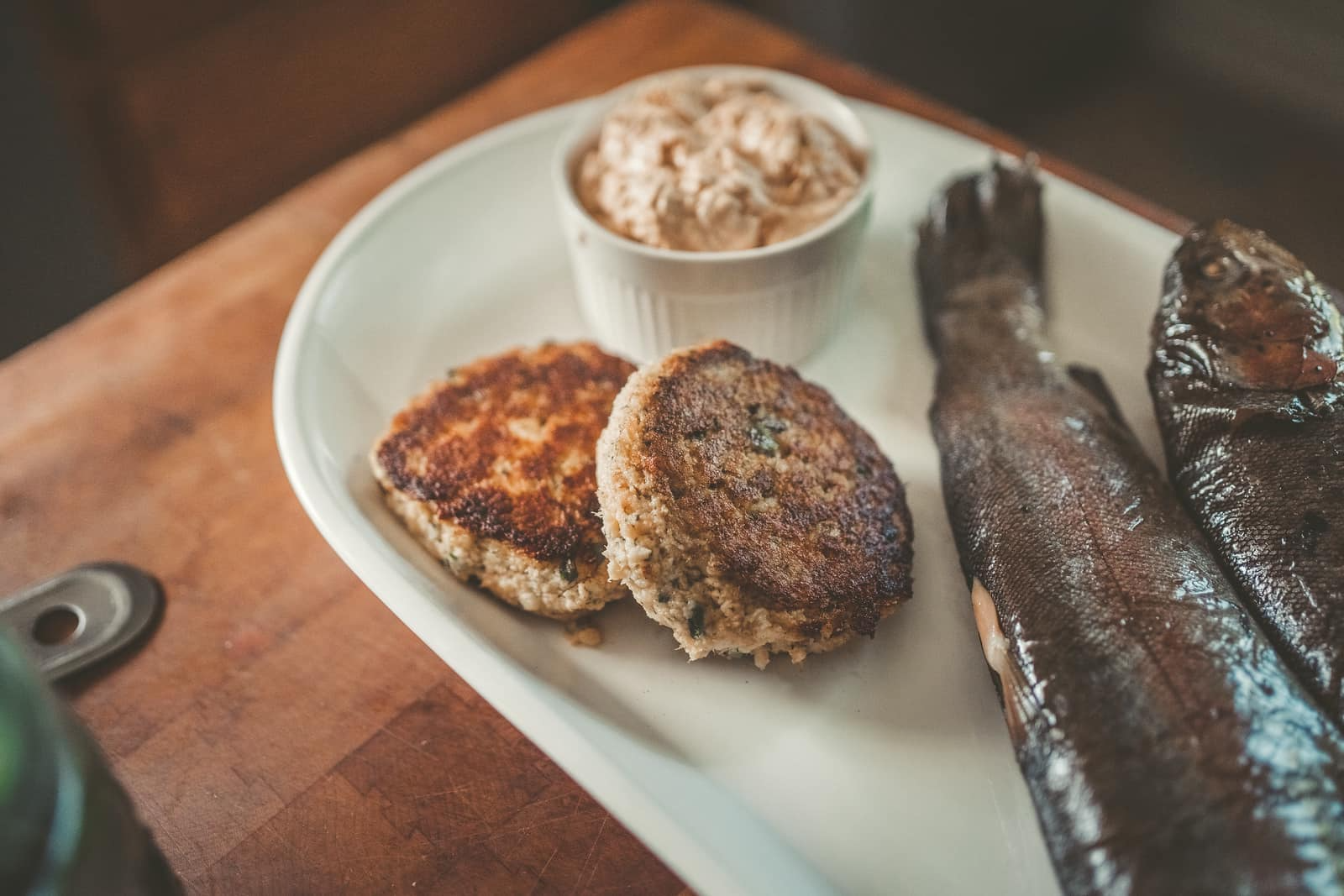
A plate of smoked trout and trout cakes. Smoke in Chimneys | Facebook
In a recent viral Instagram Reel, Ty compared and contrasted store-bought trout with his hatchery’s offerings. The former, priced at $7.99 per pound, appeared to lack vibrancy with its dull complexion and muddy water taste. He contrasts it with his trout, valued at $18.99 per pound, with its salmon-like meat and a bright pink texture.
He attributes this to employing wise-use, natural-based solutions – not chemicals or pesticides – on their ponds and raceways. This commitment to wildlife conservation allows their fields to boast healthy soil and clean water, through processes like rotational grazing, that can also be attractive habitat for wildlife species.
“Wild fish stocks are at all-time lows. Salmon runs are collapsing. Wild fish are down 90%,” he said.
What’s a solution that could be explored? The answer, according to Ty, is operations like his since “aquaculture is the future of seafood.”
“We’re sitting on such a resource to be able to raise our own freshwater fish here in America to eat, while we're getting salmon from Norway,” he said.
And Ty isn’t alone is desiring to change perceptions about farm-raised trout.
The esteemed James Beard Foundation shares a similar goal with Ty to change negative perceptions about aguaculture, or the practice of raising fish in freshwater environments. The organization said aguaculture is unfairly castigated here in the U.S. because its potential hasn’t been fully unleashed yet, though it could be better marketed to the consumer by developing “an industry to be an example for the rest of the world.”
Everyone Wants Good Tasting Trout
Ty said the feedback to their product has been generally positive–converting the most doubtful of trout skeptics.
The executive chef of The Dabney – a One Star Michelin restaurant in Washington, D.C. – told Ty he hadn’t been a trout fan in a decade until they landed his product and began incorporating it into their menu.
Smoke in Chimneys trout is also carried at the historic Hotel Roanoke, the famed Inn at Little Washington in Fauquier County, and even some New York fine dining establishments.
But it’s not just restaurants recognizing this fish’s nutritional value. Americans are increasingly incorporating seafood into their diets.
Purdue University observed wild and farm-raised freshwater trout is a “Best Choice” option for consumers due to being low in mercury. It’s also rich in omega-3 fatty acids, vitamin D, protein, calcium, potassium, and magnesium.
As for Ty Walker’s preferred way of preparing trout, he likes to keep it simple.
“Put out a little bag. Salt, pepper, oil, rub the whole finish down. On the grill—medium heat, six minutes aside. That's my favorite … It's literally so easy. And then the meat. You just get a fork and it falls right off the bone.”
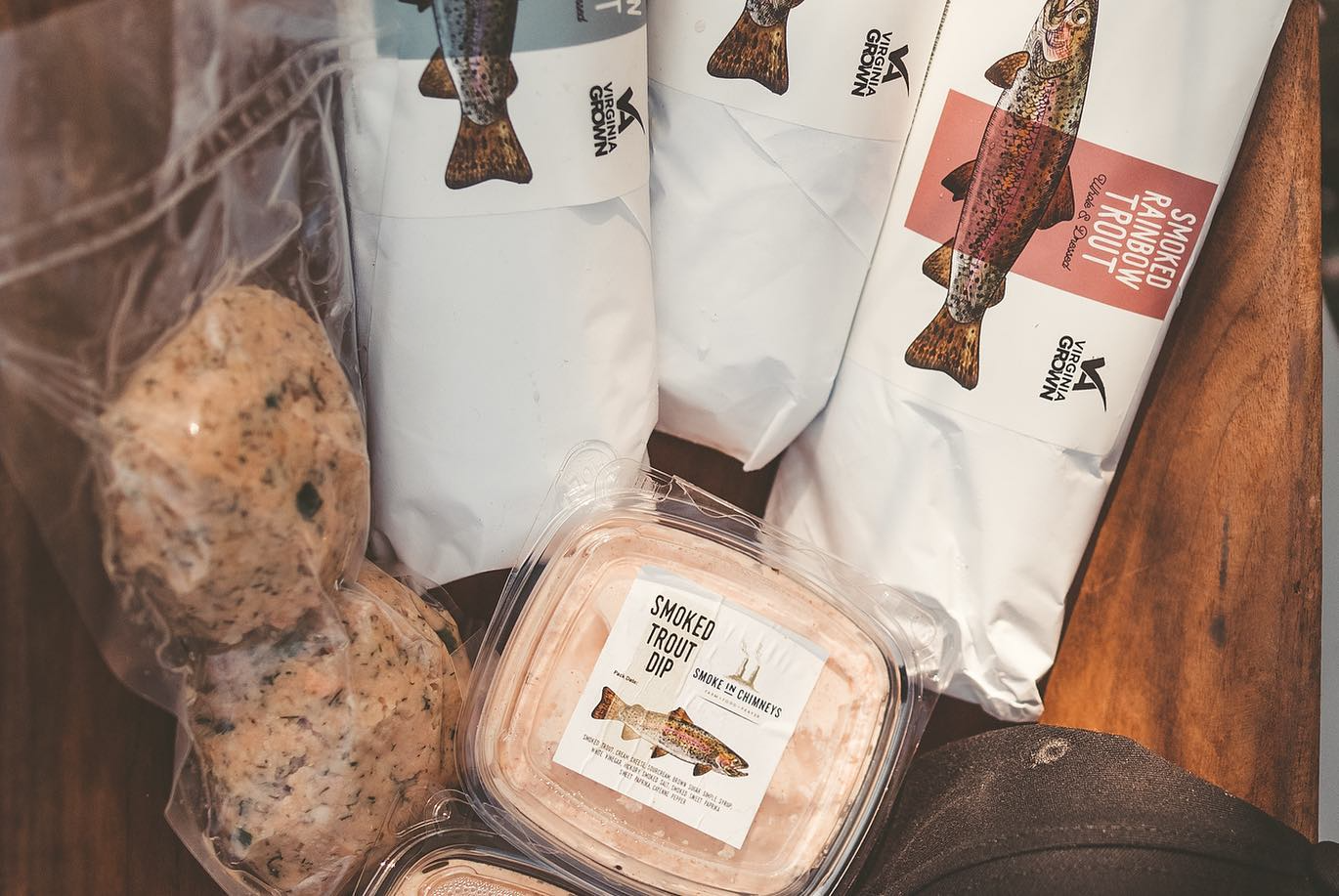
Pre-packaged trout products. Smoke in Chimneys | Facebook
One doesn’t have to reside in Virginia to enjoy Smoke in Chimneys trout. The Walkers will ship packages straight to your door, regardless of your zip code. There are currently four trout boxes to choose from: the Premium Box, the Fresh Box Trout, the Tasting Box, and the Trout Cake Box.
In addition to the trout hatchery the farm hosts Tour and Taste events and allows stay on premises through Airbnb experiences. They also offer raw milk from their A2A2 Jersey cows.
To learn more about Ty and Smoke in Chimneys, visit https://smokeinchimneys.com.
--
Gabriella Hoffman is an award-winning outdoor writer, outdoorswoman, and policy analyst working in conservation issues. Her writings and musings have appeared in some of the nation’s leading sporting magazines and newspapers. She credits her father for hooking her on fishing—the gateway activity that led her to pick up shooting sports and hunting as a young adult. Gabriella currently resides in Northern Virginia. Learn more about her work at https://gabriellahoffman.com.
